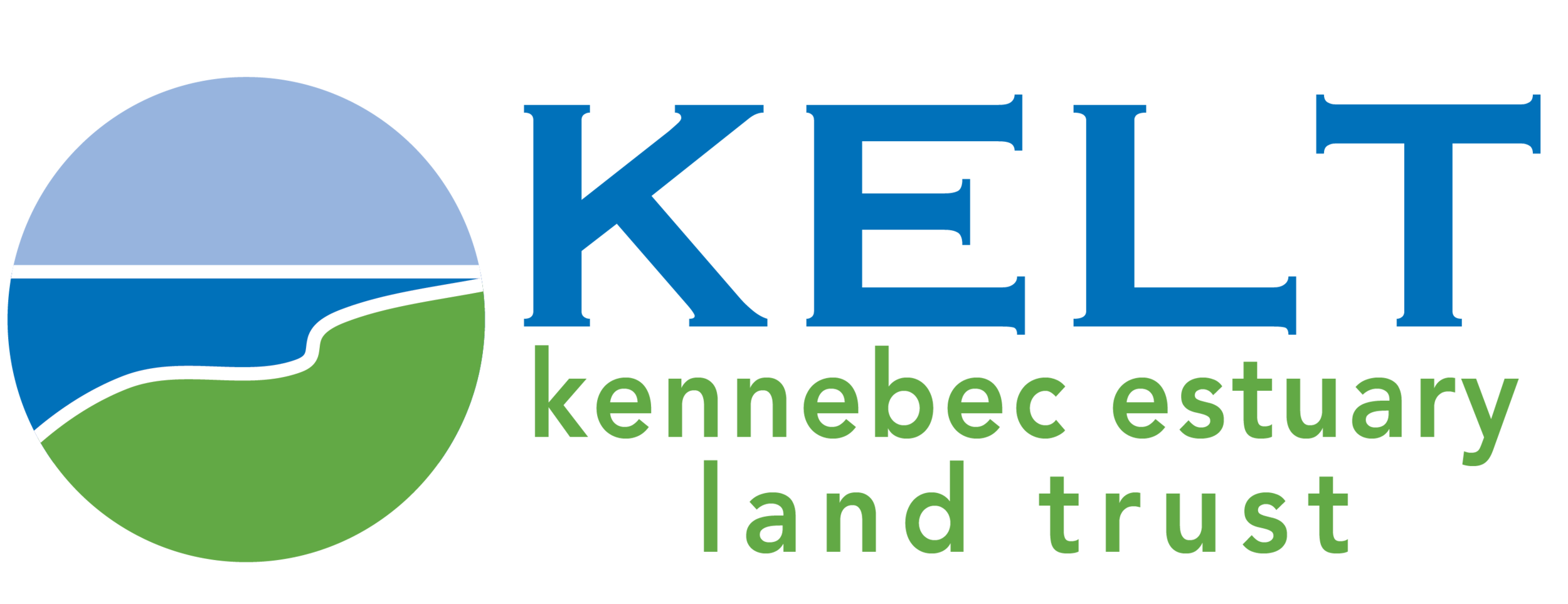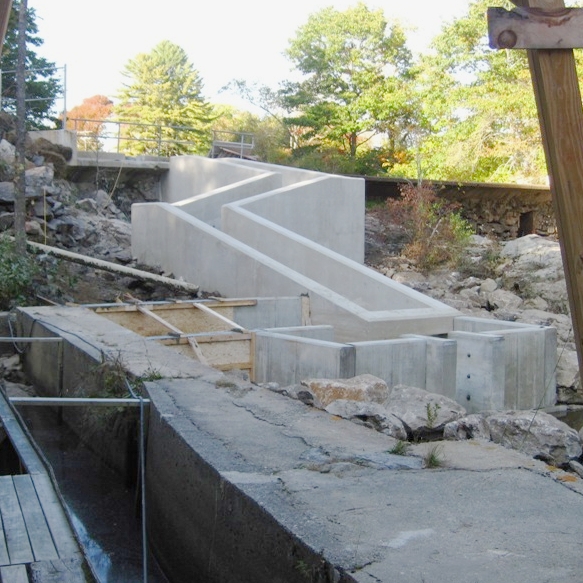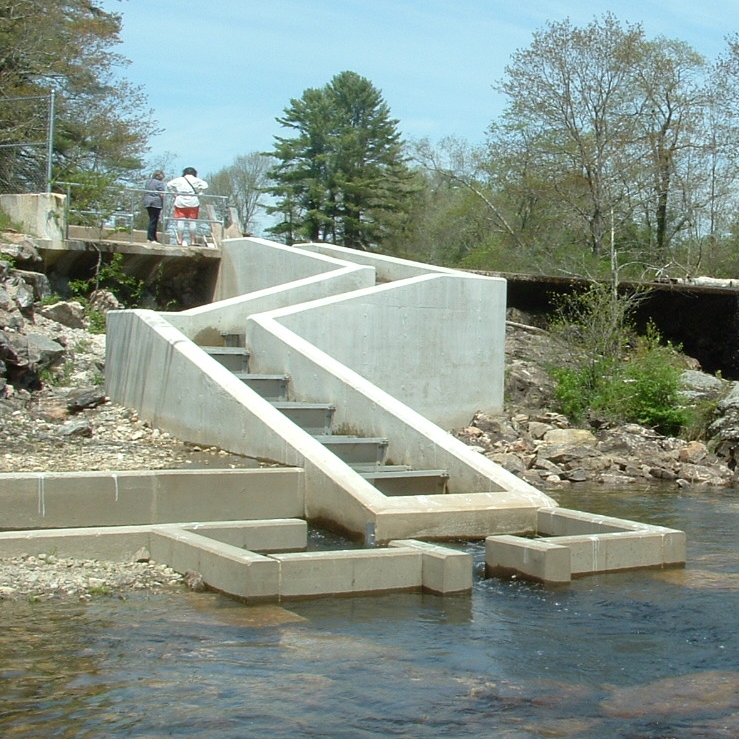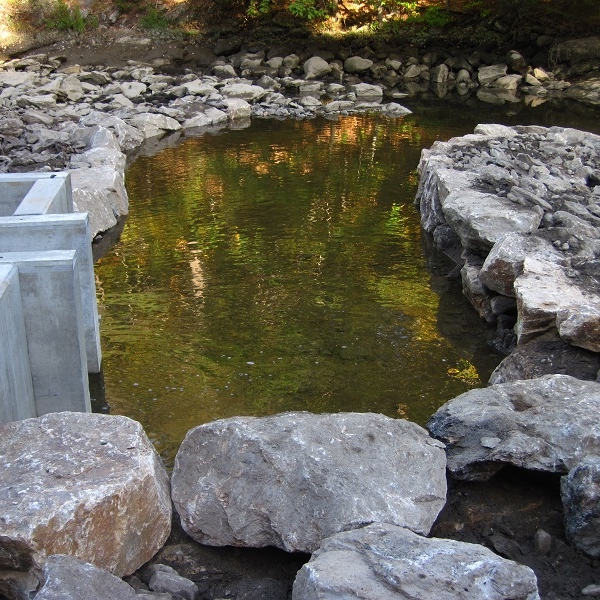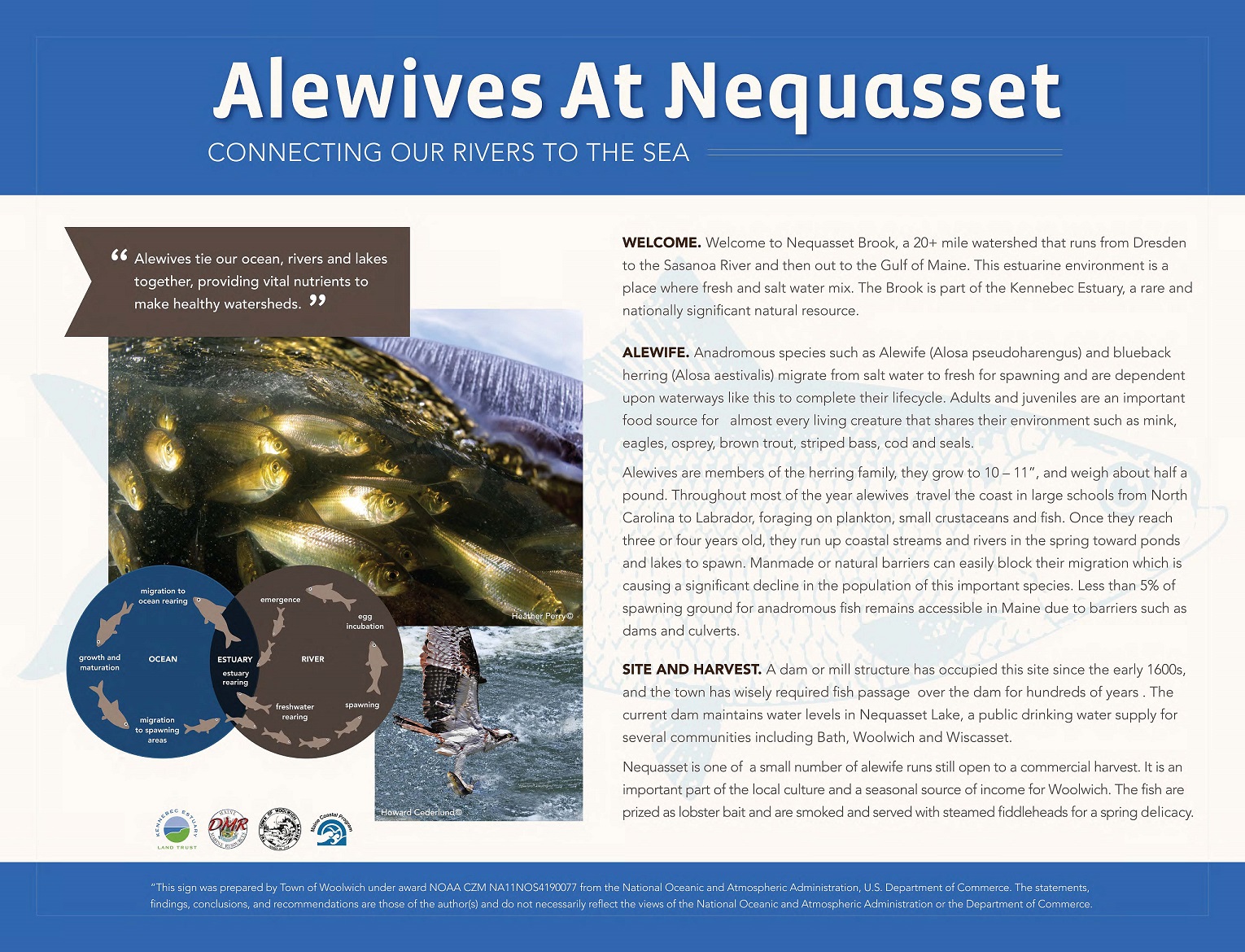Alewives at Nequasset Lake
Nequasset Alewife Run
Nequasset Lake is the site of an historic alewife run. Each spring, adult alewives migrate to Nequasset Lake to lay their eggs. The eggs hatch in late spring, and the fish spend the first few months of their lives growing in Nequasset Lake. In late summer/early fall, the young alewives migrate out to sea, where they grow to adults. Alewives are a vital part of the foundation of the food chain in the Gulf of Maine. The fish that spawn at Nequasset Lake have supported an historic alewife fishery at the Nequasset Dam site for hundreds of years. The fish count and the fish ladder are both important for keeping this run healthy and sustainable.
The Ladder - The fish ladder makes it possible for alewives to reach Nequasset Lake to spawn. Without the ladder, the alewife run at Nequasset would disappear.
The Count - The fish count helps the run in several ways. It allows us to estimate the total number of fish that reach the lake to spawn. By comparing the number of fish that reach the lake to the number that are harvested, we can figure out the health of the run. According to the Maine DMR, xx% of the fish that arrive at Nequasset must reach the lake for it to be sustainable. The count also helps us to evaluate how well the ladder is working to get fish to the lake and identify if there is anything that can be done to improve the movement of fish within the ladder.
